In 1908, John Moses Browning designed a cartridge he called the 380 Automatic Colt Pistol, but which we know today as the 380 ACP. The Germans called the cartridge the 9mm Kurz, with the Italian name for the same round being the 9mm Corto. Both of those foreign words mean short, with the 380’s metric nomenclature being 9x17mm, compared to the 9x19mm sizing of the 9mm Luger (or 9mm Parabellum).
Once snubbed for being underpowered, at least in the American market, modern bullet technology has granted new life to the 380 ACP. As a result, we have recently witnessed several manufacturers introducing new 380 ACP pistols. We grabbed two of the newest models as well as a classic piece against which we can measure the latest handguns.
The first is the Ruger Security 380 Lite Rack 03839, $296. It shoehorns 10- or 15-round magazines into a lightweight package, along with the Lite Rack system and some great sights.
The second is the Smith & Wesson M&P 380 Shield EZ 3008882, $400. Also designed to be easy to rack for those with diminished hand strength, the Shield EZ includes a grip safety hinged at the bottom and many of the features found on the very popular M&P 9mm series.
The classic entry in our test is a kindly used Beretta Model 84BP, $400. Essentially a scaled-down version of the Beretta Model 92 9mm Luger, this particular Model 84 allows the pistol to be carried hammer down where it can be shot as a true double action. Or it can be carried cocked and locked for single-action operation.
Our test shooters fired this trio side by side at American Shooting Centers in Houston. For accuracy comparisons, we shot at 15 yards with Hornady Critical Defense FTX 90-grain rounds, 90-grain Federal Personal Defense Hydra-Shoks, Black Hills 90-grain JHPs, and Armscor 95-grain FMJs. Additionally, we fired speed drills at 5 and 8 yards. Here’s what we found:
Smith & Wesson Shield EZ 180023 380 ACP
$400
Gun Tests grade: B [OUR PICK]
Light, fast, and easy to shoot, we would love to see an update with more magazine capacity.
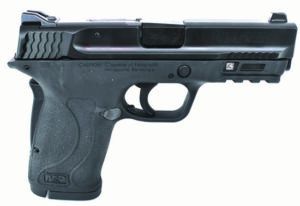
| Action Type | Semi-auto, hammer fired |
| Overall Length | 6.75 in. |
| Overall Height | 5.0 in. |
| Maximum Width | 1.17 in. |
| Weight Unloaded | 1.05 lbs. |
| Weight Loaded | 1.35 lbs. |
| Slide Material | Stainless steel |
| Slide Retraction Effort | 11.0 lbs. |
| Receiver Material | Polymer |
| Finish | Armornite |
| Front Strap Height | 2.5 in. |
| Back Strap Height | 3.5 in. |
| Barrel Length | 3.675 in. |
| Grip Thickness (Maximum) | 1.04 in. |
| Grip Circumference | 5.1 in. |
| Magazines | Two 8-round |
| Rear Sight | Drift adjustable, two dot |
| Front Sight | Fixed post, single dot |
| Sight Radius | 5.7 in. |
| Trigger Pull Weight | 4.4 lbs. |
| Trigger Span | 2.75 in. |
| Safety | Grip |
| Warranty | Lifetime service policy |
| Telephone | (800) 331-0852 |
| Website | Smith-Wesson.com |
| Made In | U.S. |
The Smith & Wesson M&P (Military & Police) Series dates back to 1899 with the Hand Ejector Model. Initially chambered in the 38 Long Colt caliber, the revolver was soon converted to the 38 Special and the rest, as they say, is history. Smith & Wesson modernized the M&P line in 2005 with the introduction of polymer-framed pistols. We now benefit from a couple of generations of updates with S&W pistols that shoot well, handle well, and are competitively priced. Models are available in 9mm Luger, 40 S&W, and 45 ACP.
One of the more recent additions to the line has been the M&P 2.0 Shield EZ. That is a long name, but it tells you a lot about the pistol. With the shape and the look, its M&P heritage is obvious. The “Shield” part of the moniker is a bit misleading. Historically, a “Shield” title has identified a smaller pistol, originally starting out as a 7+1 capacity pocket pistol with real grips and real sights. Smith now offers a double-stack Shield Plus, but it is still a smaller pistol. S&W debuted the EZ line in 2018, and those still appear on the S&W website as a Micro-Compact, but we are going to differ there. Our sample of the 380 EZ is much more similar in size to a Glock 19 (maybe even more so the thinner G48) than it is the early Shield version.
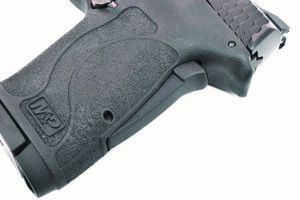
Perhaps the biggest differences lie in the changes that make it an “EZ” model. It appears that S&W has totally embraced the portion of the firearms market that includes those with hand-strength or recoil-sensitivity issues. We’ve discussed the solutions for the recoil issue — moderate chambering, larger grip, heavier pistol. As does the Ruger, the Shield EZ utilizes a blowback action, the simplicity of which keeps the price down, but which also requires more mass in the slide and a proper recoil spring. The Shield EZ has a larger hybrid slide, most of which is aluminum that contains a steel breechblock.
The Shield EZ, unlike the rest of the M&P line, is hammer-fired, which brings its own advantages to the game, one of the most important, we think, contributes to safety. According to Col. Cooper, Rule #1 is, “Every gun is always loaded.” So when we handle a pistol, we check it repeatedly, which brings us to the press check function we mention so often.
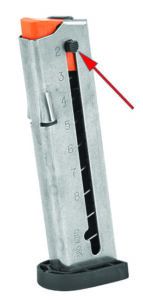
The idea is to keep the pistol pointed in a safe direction and push the slide slowly to the rear, thus opening the breech, allowing the shooter to ascertain whether or not the pistol is, in fact, loaded. Our favorite way of doing so is to (1) point the pistol downrange, (2) grasp the pistol in our strong hand, (3) pinch the slide between our support hand’s index finger and thumb and (4) draw the slide to the rear approximately ¼ to ½ inch. People attempting to do this with striker-fired pistols may find substantial resistance from the pistol’s recoil and striker springs. A hammer-fired pistol may create the same resistance if the hammer has not already been cocked. With the hammer already set — which is another pretty good indication the pistol is loaded — the shooter now only has to overcome the recoil spring’s tension to press check, thus alleviating potentially 1/3 to ½ of the possible resistance. Stated simply, the slide is easier to rack. The Shield EZ even includes wider tabs at the rear end of the slide, allowing folks to more easily grab the slide using the slingshot method and pull the slide to the rear. Fishscale-like grasping grooves are cut into the side of the slide, and more abbreviated versions are located just rearward of the muzzle. Also, the magazines have tabs protruding from the side of the follower, allowing the magazine spring to be more easily compressed. All in all, the Shield EZ is easy to load and manipulate. That said, the magazine only has an eight-round capacity. We would love to see a version of this pistol with the “stack-and-a-half” magazines so common now, and with capacities more in line with what the Beretta and the Ruger offer.
The Shield EZ also incorporates features S&W has determined necessary in the last 15 or so years of development. The rear sight is a two-dot drift-adjustable version with a nice, deep black U notch. The front sight is a single-dot fixed unit. The dust cover sports a three-slot Picatinny rail. The magazine release is reversible, but all the other controls are left side for right-handers only. Except for the grip safety. The Shield EZ provides a pivoting grip safety like on a 1911, but different. The S&W version hinges at the bottom, about two-thirds of the way down the backstrap. It must be completely depressed or the trigger does not function. While we had no issues disengaging the grip safety, we would love to see S&W add a memory bump to the top of the lever to make sure those folks with less hand strength could activate things properly.
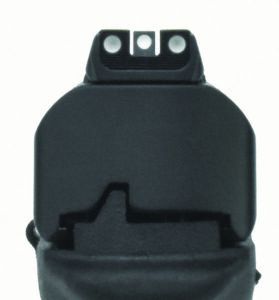
The grip is thin and easy to conceal. The molded-in texturing provides a secure purchase. The steel breech block has a lever that protrudes when the chamber is loaded, and the slide is finished in Armornite, S&W’s very corrosion-resistant finish. The trigger was light enough at 4.4 pounds, and an overtravel stop is molded into the frame just behind the trigger shoe. No hinged trigger safety on this pistol. Our sample did not have a manual thumb safety, but those models are available.
Our Team Said: The S&W Shield EZ functioned perfectly, except for a couple of issues with the Armscor ammo as we saw in the Ruger. Recoil may not have been quite as light at the Ruger, though we thought the pistol cycled more quickly and settled down smoothly for follow-up shots. The Shield EZ easily won the speed contests. Favorite ammo for the S&W was, once again, the Black Hills 90-grain jacketed hollow points. If you’re looking for a quality 380 ACP, the Shield EZ is hard to beat. It was Our Pick in this test.
| 380 ACP RANGE DATA | |||
| Hornady 90-grain FTX | Beretta Model 84 | Ruger Security 380 | Smith & Wesson Shield EZ |
| Average Velocity | 978 fps | 912 fps | 955 fps |
| Muzzle Energy | 191 ft.-lbs. | 166 ft.-lbs. | 182 ft.-lbs. |
| Best Group | 2.07 in. | 1.59 in. | 1.98 in. |
| Average Group | 2.39 in. | 1.91 in. | 2.30 in. |
| Federal Personal Defense 90-grain Hydra-Shok JHP | Beretta Model 84 | Ruger Security 380 | Smith & Wesson Shield EZ |
| Average Velocity | 1012 fps | 959 fps | 963 fps |
| Muzzle Energy | 205 ft.-lbs. | 180 ft.-lbs. | 185 ft.-lbs. |
| Best Group | 1.60 in. | 1.74 in. | 2.74 in. |
| Average Group | 1.95 in. | 2.30 in. | 2.81 in. |
| Black Hills 90-grain JHP | Beretta Model 84 | Ruger Security 380 | Smith & Wesson Shield EZ |
| Average Velocity | 952 fps | 912 fps | 945 fps |
| Muzzle Energy | 181 ft.-lbs. | 166 ft.-lbs. | 179 ft.-lbs. |
| Best Group | 1.49 in. | 2.26 in. | 1.85 in. |
| Average Group | 1.69 in. | 2.41 in. | 2.05 in. |
| Armscor 95-grain FMJ | Beretta Model 84 | Ruger Security 380 | Smith & Wesson Shield EZ |
| Average Velocity | 992 fps | 975 fps | 996 fps |
| Muzzle Energy | 208 ft.-lbs. | 190 ft.-lbs. | 209 ft.-lbs. |
| Best Group | 1.55 in. | 1.98 in. | 1.65 in. |
| Average Group | 2.12 in. | 2.73 in. | 1.97 in. |
How we tested: We fired these pistols at American Shooting Centers in West Houston. Accuracy was tested at 15 yards by shooting multiple five-shot groups from a well-sandbagged Caldwell Pistolero shooting rest (MidwayUSA.com Product No. 517357, $28) assisted by a Mini DRC Fortune Cookie from Wiebad.com ($75, Product No. MINIFC). We found our ammo through Ammoseek.com, firing Hornady Critical Defense FTX 90-grain rounds, Federal Personal Defense 90-grain Hydra-Shoks, Black Hills 90-grain JHPs, and Armscor 95-grain FMJs.
| DRILL NO. 1 DATA | |
| Pistol | Single Shot Average Time |
| Beretta 84 | 0.86 |
| Ruger Security 380 | 0.92 |
| S&W Shield EZ | 0.78 |
Process: Fire one shot from low ready at A Zone target (5 by 11 inches) placed at 5 yards. Numbers are averages for eight repetitions. Times are in seconds.
| DRILL NO. 2 DATA | |||
| Pistol | 1st Shot | Split Average | Total Time |
| Beretta 84 | 1.1 | 0.326 | 1.73 |
| Ruger Security 380 | 1.08 | 0.364 | 1.81 |
| S&W Shield EZ | 1.09 | 0.268 | 1.59 |
Process: Fire three shots from low ready at A Zone target (5 by 11 inches) placed at 8 yards. Numbers are averages for three repetitions. Times are in seconds.
Written and photographed by Joe Woolley, using evaluations from Gun Tests Team members. GT



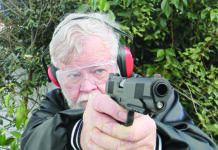
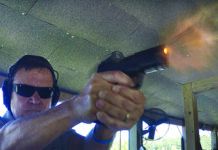
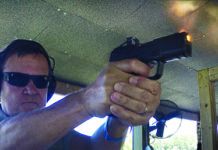
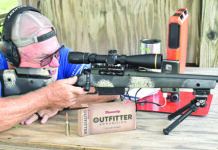
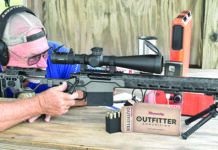

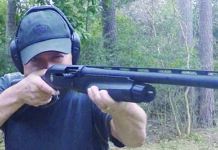
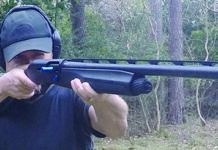
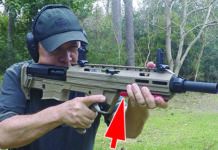




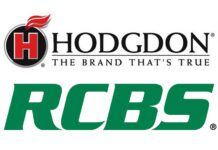
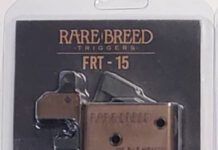







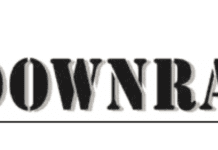
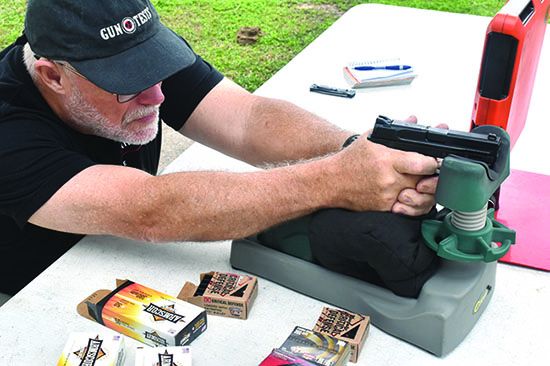

You make the statement “As does the Ruger, the Shield EZ utilizes a blowback action”. From the Ruger instruction manual for the Security 380 “Action: The strong locked breech action of the RUGER® SECURITY-380® pistol utilizes a tilting barrel design in which the barrel and slide are locked
together at the moment of firing.” From the pictures in the Shield manual it also obviously has a locked breech, tilt barrel action. Unless I’m missing something here, this is disappointing in a review.
Agreed!!!
The only blowback pistol of the three reviewed in these articles is the Beretta 84, and this feature is *the primary reason* why (1) its slide is the hardest to retract, and (2) its recoil is the most violent. These being central aspects of the author’s otherwise useful comparison of the three guns, it’s a glaring error in his analysis of causes & effects.
How about a 389 “+P” ??